Pilgrimages Around the World: Exploring Global Spiritual Journeys
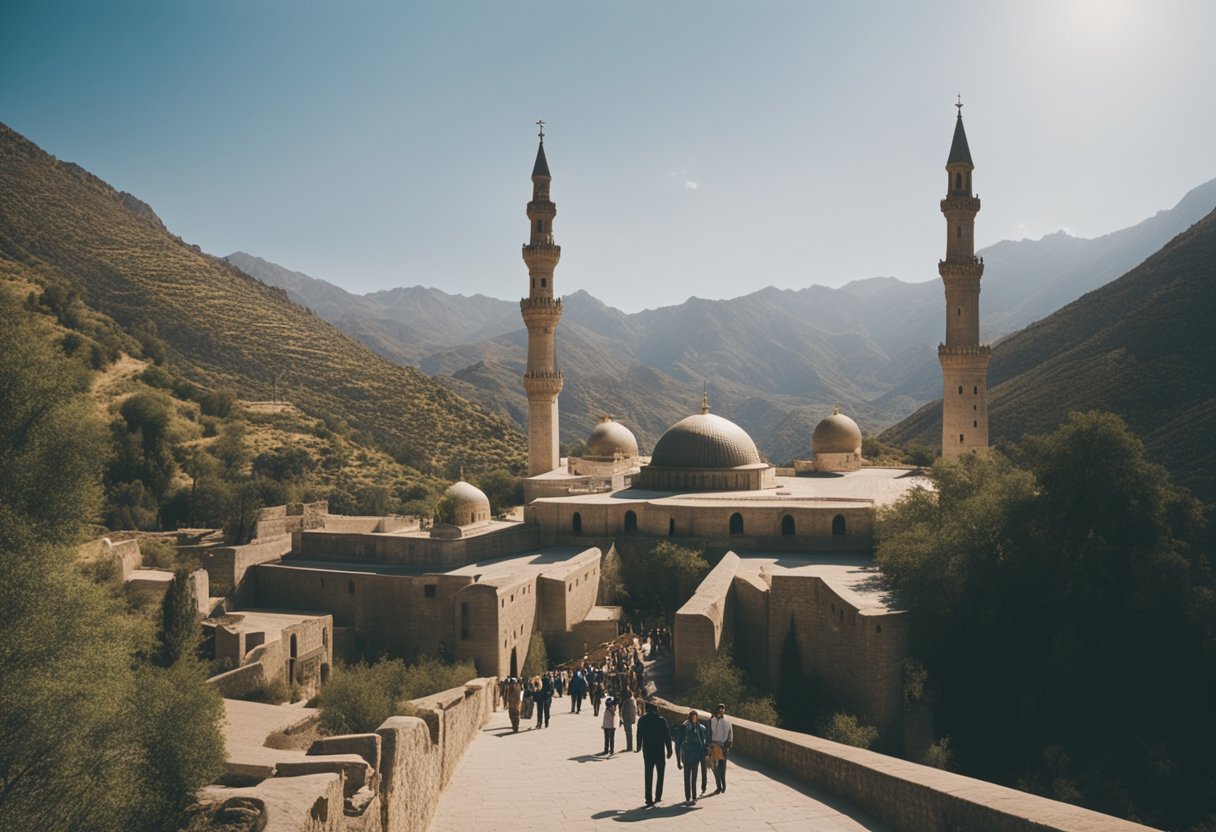
Updated On: April 15, 2024 by Maha Yassin
Pilgrimages around the world represent a profound element of human culture spanning various religions and regions, symbolising individuals’ spiritual quests for greater meaning and connection. These journeys often follow paths laid down by centuries of tradition, leading pilgrims to sites regarded as sacred within their faith. From the ancient ritual-laden paths to Mecca—a central pilgrimage for Muslims, known as the Hajj—to the storied routes of the Camino de Santiago, where Christians walk in the footsteps of Saint James, pilgrimages come in many forms, each holding significant historical and spiritual importance.
The unique interplay between religious devotion and travel has long captivated humanity, and today, these spiritual sojourns remain as pivotal as ever. They provide a physical challenge and a transformative experience, inviting pilgrims worldwide to step outside the confines of their everyday lives. Through such spiritual journeys, from the Ganges in India to the tranquil Buddhist paths in Japan, we can explore our inner selves as much as our outer landscapes. Beyond the religious elements, these pilgrimages contribute richly to local economies while preserving the routes and sites by entities like UNESCO, which ensures their endurance for future generations.
Historical Context of Pilgrimages Around the World
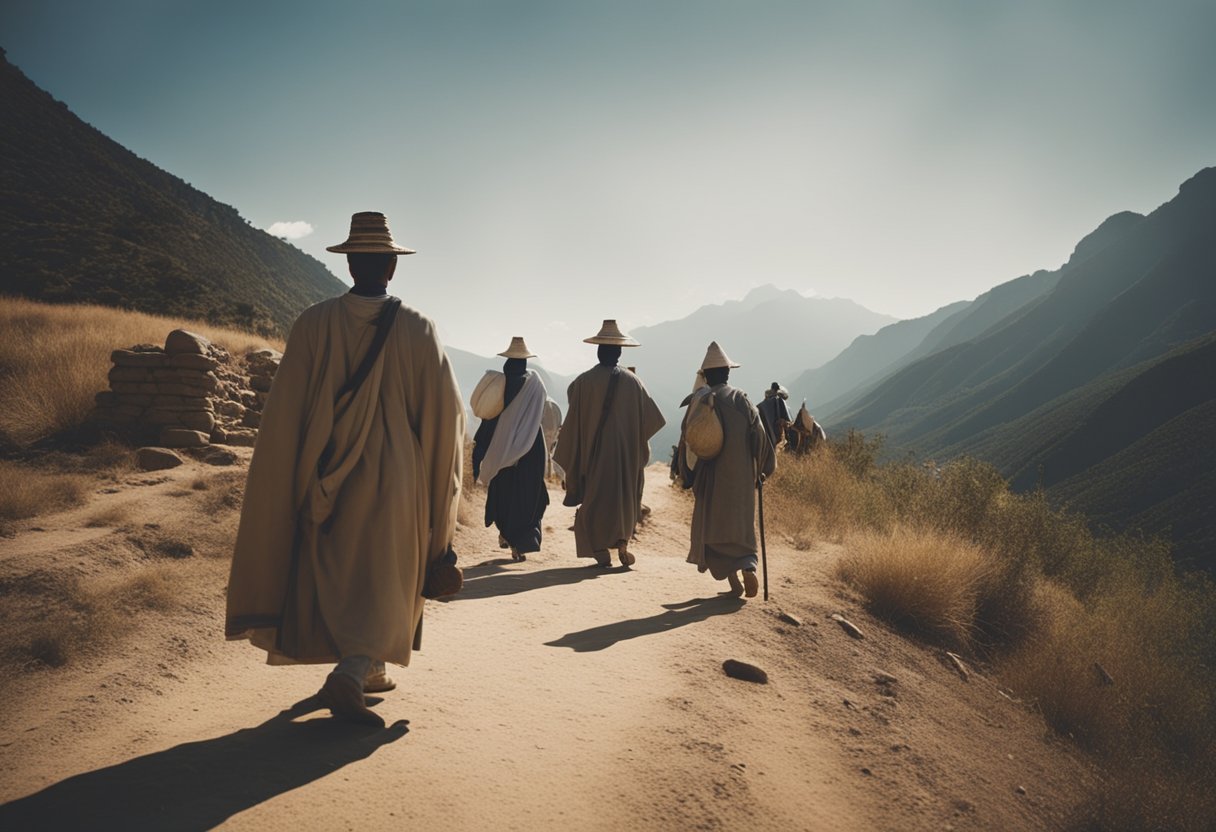
This exploration will uncover how spiritual journeys have been a cornerstone in numerous cultures and religions throughout history.
Origins and Evolution of Spiritual Travels
The pilgrimage has a deep-seated historical relevance that spans various faiths and civilisations. We trace the origins of these spiritual travels to ancient times when individuals embarked on journeys to holy sites or regions with significant religious meaning. For instance, the practice within Islam of performing the Hajj to Mecca stands as one of the five pillars of the religion, where millions continue to gather annually in a tradition instituted by the Prophet Muhammad but rooted in Abrahamic stories.
In many cultures, such historical travels have evolved from rudimentary paths to established routes, like the renowned Camino de Santiago in Christianity, a network of pilgrimages leading to the shrine of the apostle Saint James the Great in the cathedral of Santiago de Compostela in Spain.
Significance in Various Religions
Hinduism offers a rich tapestry of pilgrimage traditions, with the Kumbh Mela being one of the largest peaceful gatherings in the world, held at sacred river locations and bearing immense cultural and historical importance.
Christianity has lent considerable focus to pilgrimages throughout its history, seeing the faithful travel to places like the Holy Land – a spiritual quest often undertaken as an act of penance or devotion. In Islam, not only is the Hajj to Mecca of profound importance, but it is also important to visit other significant sites such as Medina, where the Prophet’s Mosque offers deep spiritual resonance.
Each of these journeys, intricately woven into the fabric of human history and culture, is a testament to our collective pursuit of connectivity with our religious and spiritual identities.
Key Pilgrimages in Islam
In Islam, pilgrimages are profound demonstrations of faith, with Mecca being the focal point of these spiritual journeys. These pilgrimages are pillars of the Muslim faith, deeply rooted in tradition and spiritual significance.
The Hajj: Pilgrimage to Mecca
The Hajj is the most significant pilgrimage in Islam and a mandatory religious duty for Muslims that must be carried out at least once in their lifetime by all adult Muslims who are physically and financially capable of undertaking the journey. In Saudi Arabia, Mecca is the pilgrimage destination due to its distinction as the holiest city in Islam. The Kaaba, a large cubic structure covered in a silk cloth known as the Kiswa, is situated at the centre of Islam’s most sacred mosque, Al-Masjid Al-Haram. It is the direction towards which Muslims around the globe pray and the ultimate point of visitation during the Hajj.
During specific Islamic months, millions of Muslims congregate to perform a series of rituals. These include walking counter-clockwise seven times around the Kaaba, running back and forth between the hills of Safa and Marwah, and standing vigil on Arafat’s plains. The spiritual significance of the Hajj is immense, as it reflects the actions of the Prophet Ibrahim and his family and serves as a unifying force, bringing together believers from all parts of the world to share in this sacred act.
Visiting the Prophet Muhammad’s Legacy
Aside from the ritualistic Hajj, Muslims also undertake journeys to visit the city of Medina, the second holiest city in Islam, to pay respects at the final resting place of the Prophet Muhammad. While not a compulsory part of the Hajj, this visit holds great spiritual significance for many pilgrims who travel to Al-Masjid An-Nabawi, ‘The Prophet’s Mosque’. Here, in the tranquillity of Medina, they find a profound connection with their Prophet’s legacy.
The mosque houses the Green Dome, under which the Tomb of the Prophet lies, and has a famed Rawdah, considered to have a piece of Paradise. Although it is not obligatory, visiting Medina offers a deeply spiritual experience, allowing Muslims to reflect on the life and teachings of Muhammad, which continue to guide their faith.
Christian Journeys of Faith
In this exploration of Christian pilgrimages, we journey through pathways lined with history and devotion, visiting profound sites from Santiago de Compostela to the sacred streets of Jerusalem and Rome.
The Camino de Santiago Experience
The Camino de Santiago, also known as the Way of St. James, is a network of pilgrim routes ending at the Cathedral of Santiago de Compostela in Spain, where the remains of St. James are said to be buried. Thousands of Christians traverse these paths annually, taking on routes such as the popular French Way or the scenic Coastal Route. Each step on the Camino is drenched in history, punctuated by rustic landscapes, and infused with a deep communal spirit.
Journeys to Jerusalem and Rome
Jerusalem is paramount in the Christian faith as the site of Jesus’ crucifixion and resurrection. Pilgrims visit the Church of the Holy Sepulchre, walking the Via Dolorosa where Jesus carried his cross. Rome, home to the Vatican City, calls to Christians worldwide. St. Peter’s Basilica stands as the heart of Catholicism, with visitors pouring in to witness the Pope’s residence and Michelangelo’s breathtaking Sistine Chapel. To journey into these cities is to walk through a living history of the Christian faith.
Pilgrimage Sites in France and Portugal
France boasts of Lourdes, a sanctuary for those seeking healing and hope, with millions visiting the shrine of Our Lady of Lourdes for its reputed miraculous waters. In Portugal, Fátima is a destination of profound Marian devotion, where the apparitions of the Virgin Mary to three shepherd children inspire pilgrims to gather, especially for the candlelight processions on the 13th of May and October. These sites affirm the intimate connection between the believers and the divine.
Hindu and Buddhist Pilgrimage Paths
Hindu and Buddhist pilgrimages lead us to some of the most spiritually significant sites in the world. In these journeys, one encounters the intersection of deep religious traditions with vibrant cultures.
The Sacred Journeys in India and Tibet
In India, Hindus consider the Ganges River to be supremely holy. Pilgrims immerse themselves in its waters, seeking purification and spiritual renewal. One of the most meaningful events along the Ganges is the Kumbh Mela, a mass Hindu pilgrimage which draws millions to bathe in the sacred river. Another important Hindu pilgrimage is the Char Dham, one of the four temple sites in the Indian Himalayas that is said to help achieve moksha (liberation).
Buddhist pilgrims, on the other hand, might visit sites associated with the life of Buddha, such as Bodh Gaya, where he attained enlightenment. Beyond India, the mountain of Mount Kailash in Tibet is revered in both Buddhism and Hinduism. Hindus believe it to be the abode of Lord Shiva and a place where one can attain moksha, while for Buddhists, it is the centre of the universe and a site for pilgrimage.
Exploring Buddhist Trails in Japan and Sri Lanka
Japan is home to an extensive pilgrimage route known as the Shikoku Pilgrimage. It covers 88 temples associated with the Buddhist monk Kobo-Daishi. Each of these temples uniquely connects to Kobo-Daishi, who significantly spread Buddhism in Japan. This 1,200-kilometre journey offers pilgrims a spiritual awakening and a deep dive into Japanese culture and natural landscapes.
In Sri Lanka, Adam’s Peak, or Sri Pada, holds significance for Buddhists, who believe the sacred footprint atop the mountain is that of the Buddha. The pilgrimage season in Sri Lanka typically begins on Poya Day and attracts Buddhists and pilgrims from various faiths, showcasing the island’s religious harmony.
The Role of UNESCO and Conservation

We recognise the vital function of UNESCO in preserving the world’s spiritual heritage, ensuring that future generations have access to these treasured sites with immense cultural and historical significance.
Protecting the World’s Spiritual Heritage
UNESCO designates certain locations as World Heritage Sites for their outstanding universal value and to protect them for posterity. These sites often include sacred places and monuments pivotal to human history and spirituality. By identifying and nurturing such places, UNESCO aims to protect the integrity of these sites against the impact of time, environmental threats, and the strains of modern tourism.
Safeguarding sacred sites ensures the continuation of these places’ cultural traditions and religious practices. These heritage sites are more than just landmarks; they are living symbols of our shared human history. UNESCO’s intervention protects their essence while allowing pilgrims and visitors to continue their spiritual journeys.
UNESCO’s Part in Safeguarding Sites
UNESCO’s role extends to actively engaging with local communities and authorities to promote conservation efforts for World Heritage Sites. The organisation collaborates with nations to develop frameworks for managing these sites effectively, ensuring that conservation strategies respect the site’s value and the local customs.
Moreover, UNESCO offers expert guidance and resources to repair and maintain the structural integrity of ancient monuments and sacred sites while fostering cultural exchange and understanding. The programmes initiated by UNESCO contribute significantly to maintaining the cultural landscape, so these storied locales continue to resonate with their spiritual significance.
Modern Pilgrimages and Adventures
Pilgrimages have always been a fusion of the spiritual and the physical, guiding individuals towards enlightenment. In the modern era, these journeys have adapted, combining tradition with the spirit of adventure.
Contemporary Spiritual Journeys
Modern pilgrimages cater to diverse spiritual seekers, providing paths that tap into the rich tapestry of global traditions. Today’s pilgrims might follow historical & spiritual pilgrimage journeys around the world, embracing the sacred significance of ancient trails. For example, the annual trek to Jerusalem remains a vital experience for many, as it serves as a religious act and a profound exploration of faith and history.
Integrating Adventure with Tradition
The adventure component is increasingly prominent in modern-day pilgrimages. The journey offers as much value as the destination, inviting a profound personal and collective quest. There is a new wave of travellers embarking on pilgrimages to challenge mind and body, like those hitting ancient trails in pursuit of a unique spiritual adventure. These routes, such as the epic Abraham’s Path or the Camino de Santiago, are less about religious necessity and more about discovering oneself through the rigours and revelations of the journey.
Navigating the Pilgrimage Experience
Embarking on a pilgrimage is a profound undertaking, whether seeking spiritual growth, historical insights, or personal challenges. We’ll explore the essential roles that tour operators play and the impact of local cultures and discuss the physical and mental preparations necessary for such a journey.
Role of Tour Operators and Local Cultures
Tour operators can be invaluable in bridging the gap between pilgrims and their destinations. They not only facilitate the logistics of travel but also act as intermediaries with local cultures. Awareness of local customs and traditions is crucial, and tour operators provide that knowledge, ensuring that pilgrims respect the cultural nuances of the towns and cities they visit.
Pilgrims should be reminded of the power of the journey, which often lies in the interactions with people along the way. This fosters a deeper, more authentic experience—a sentiment we embrace wholeheartedly.
Physical Demands and Mental Preparation
The physical demands of a pilgrimage cannot be understated. Whether traversing the mountainous paths to Machu Picchu or the lengthy trails of the Camino de Santiago, adequate physical preparation is imperative. Pilgrims must ensure they are in good health, and many find that building physical stamina through regular exercise before the journey is beneficial.
Mental preparation is equally significant. Despite being a journey with religious or spiritual intentions, the path can also test mental fortitude. We recommend setting aside time for reflection and mental conditioning. Understanding the why behind the journey can be a powerful motivator when faced with challenges.
Sacred Landscapes and Architecture
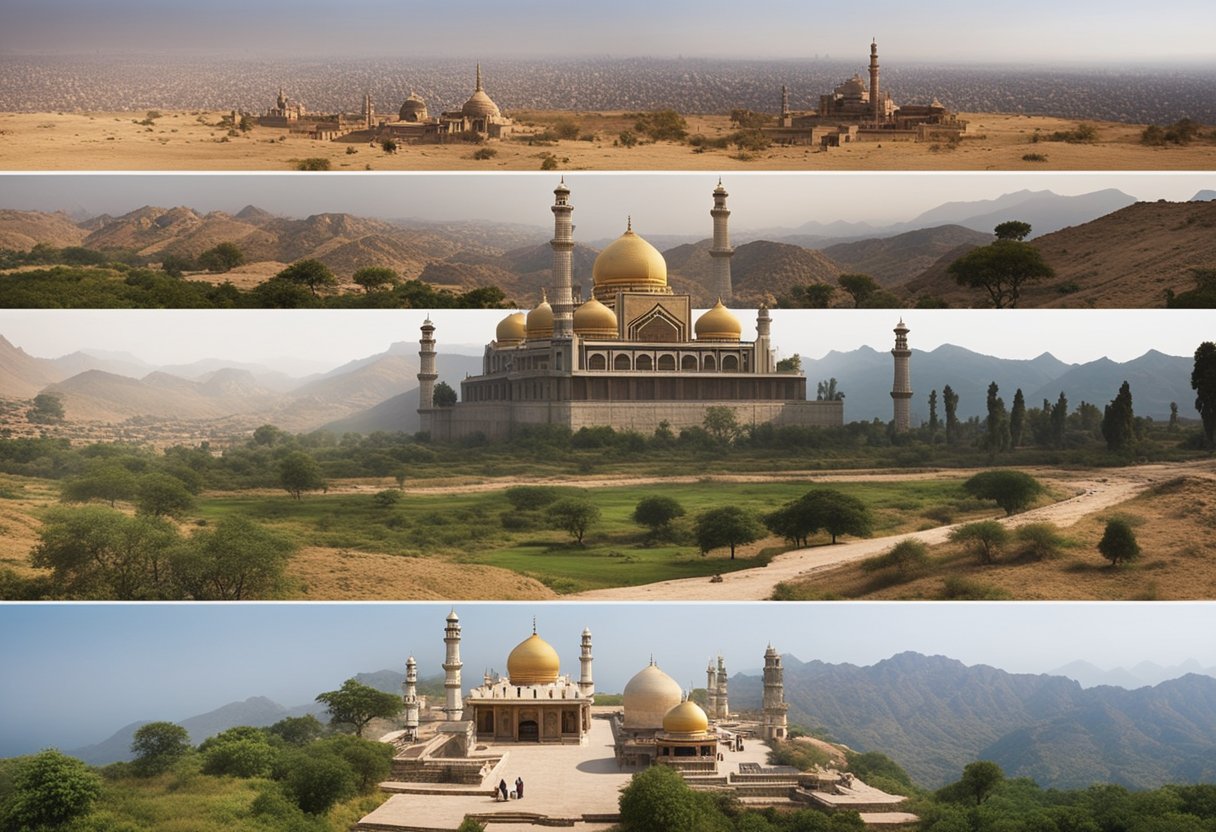
Pilgrimages are journeys imbued with spiritual significance, often leading through sacred landscapes and enhanced by the presence of remarkable religious architecture. These structures and natural settings create a tapestry where the physical and spiritual realms interweave.
The Interplay of Nature and Devotion
Immersing ourselves in the solemn tranquillity of forests on pilgrimage routes, we are in profound contemplation. Nature’s untouched vistas serve as both the backdrop and an integral component of the spiritual journey. The thick canopies of ancient woodlands or the stark beauty of desert scapes have often been described as places where prophets and saints, like Adam, experienced revelations and spiritual awakenings.
Churches, monasteries, and distinct holy sites have arisen in these natural settings throughout the ages, utilising their serenity and sense of the divine. The organic integration of architecture with the landscape is apparent as many pilgrims recount the awe upon arriving at these places of worship, intricately carved into the living rock or perched atop hills, harmoniously ensconced within the natural environment.
Churches, Monasteries, and Shrines across Continents
Churches and monasteries dot the landscapes, from the rugged terrain of the Scottish highlands to the sun-kissed hills of Tuscany, each telling a unique story of faith through its design. In many cultures, these buildings embody spiritual heritage, with their towering spires and domes reaching heavenward and their hallowed halls inviting quiet reflection.
Shrines, meanwhile, provide more intimate spaces of worship and can be found nestled within busy city streets or isolated amid a forest. The architecture of these sacred spaces, ranging from elaborate baroque facades to minimalist stone altars, reflects the diverse expressions of devotion across the globe.
In each locale, the convergence of devotion and design speaks to our collective yearning for connection to something greater than ourselves. Whether we find solace in the secluded corners of a simple chapel or in the grandeur of a cathedral, these architectural wonders stand as testaments to the enduring power of our spiritual quests.
The Spiritual Impact on Individuals
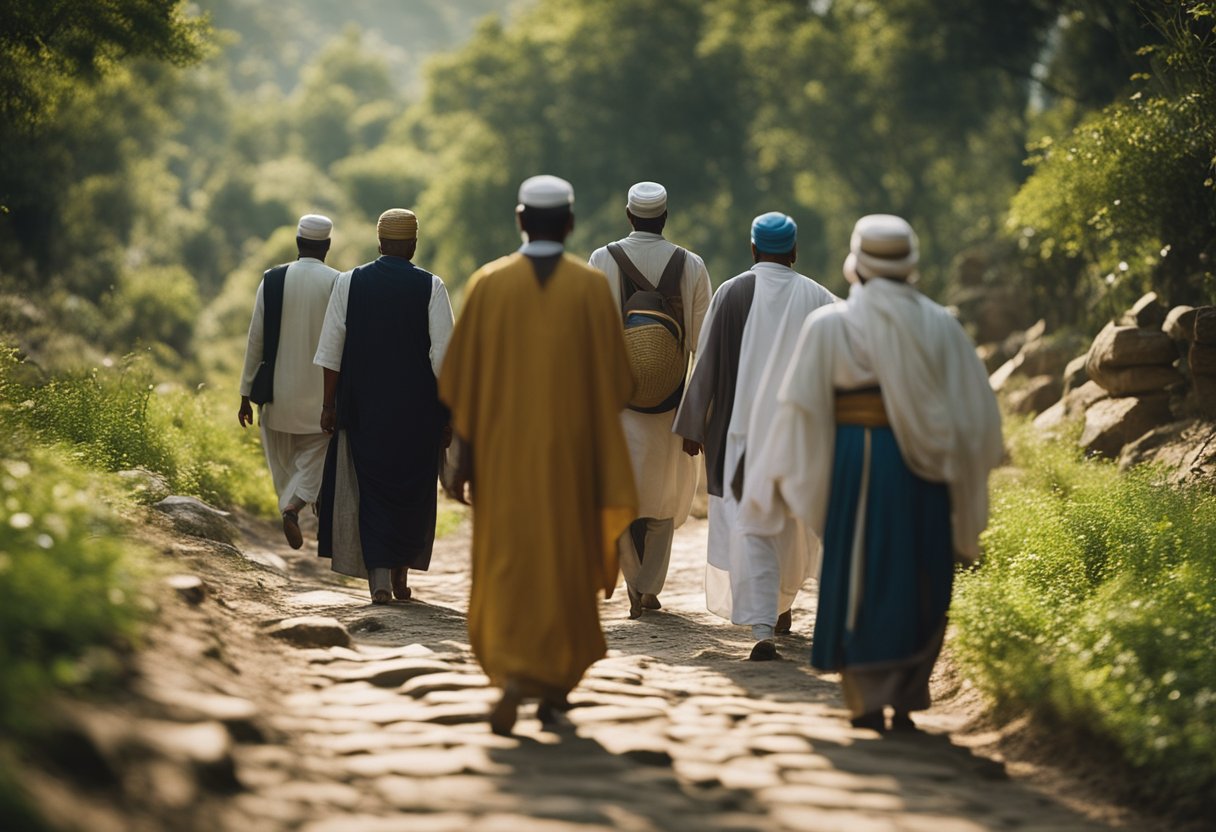
Pilgrimage is a deeply transformative experience, often leading to profound personal changes and spiritual growth. It invokes a sense of connection to something greater than oneself and provides a path to enlightenment and penance.
Personal Transformation through Pilgrimage
Embarking on a pilgrimage can be a significant milestone in an individual’s life, often resulting in personal transformation. As we traverse sacred paths, from the holy city of Mecca to the revered Camino de Santiago, we witness a multitude of personal narratives unfolding. Travellers frequently report experiencing renewed purpose or direction after completing such spiritual journeys. The act of leaving behind familiar settings and embarking on these paths encourages introspection and can lead to important life decisions or changes.
Gaining a Sense of Enlightenment and Penance
The spiritual significance of a pilgrimage is often twofold: seekers strive for enlightenment and seek penance. Undertaking these sacred journeys affords individuals quiet moments for reflection, contributing to a heightened sense of spiritual awareness. The rigorous demands of a pilgrimage, such as the challenging trek to Mount Kailash—recognised for its historical and spiritual resonance—can be seen as acts of penance. This physical exertion, paired with the mental discipline required, aids pilgrims in achieving a profound level of spiritual clarity and atonement for past transgressions.
Pilgrimage Economics and Local Communities
Pilgrimages are not just spiritual endeavours; they also significantly contribute to local economies and community development. We will explore how these sacred journeys bolster economic growth and aid in the betterment of local communities.
The Economic Benefits of Spiritual Tourism
Economic Impact: Spiritual tourism, such as pilgrimages, brings a consistent influx of funds to regions. These funds come from travellers’ expenditures on accommodation, food, travel, and souvenirs. For instance, the pilgrimage to Mecca, known as the Hajj, is a major source of revenue for Saudi Arabia, with billions of pounds generated annually, supporting local businesses and the national economy.
Employment Opportunities: Pilgrimages often result in job creation as the demand for services in the transport, hospitality, and food industries increases. This is crucial for local communities where such opportunities may be limited. The spiritual tourism industry also encourages infrastructure improvement, which can benefit residents.
Community Development through Pilgrimage
Skill and Development Initiatives: Pilgrimage sites often catalyse local development programmes. These programmes may focus on improving literacy, healthcare, and vocational skills among community members. Local communities gain access to monetary support and global networks by hosting pilgrims, which can be instrumental in their development.
Sustainable Tourism: We recognize the importance of weaving sustainability into the fabric of cultural exploration. By promoting sustainable pilgrimage practices, communities can preserve their sacred sites for future generations. This sustainable approach also allows for a balance between development and conservation. Organisations supporting such tourism, like Connolly Cove, help keep the integrity of local traditions while fostering economic development.
Through these pilgrimages, we see a harmony of economic viability and community augmentation, proving that spirituality and economic development can go hand in hand.
Concluding Remarks
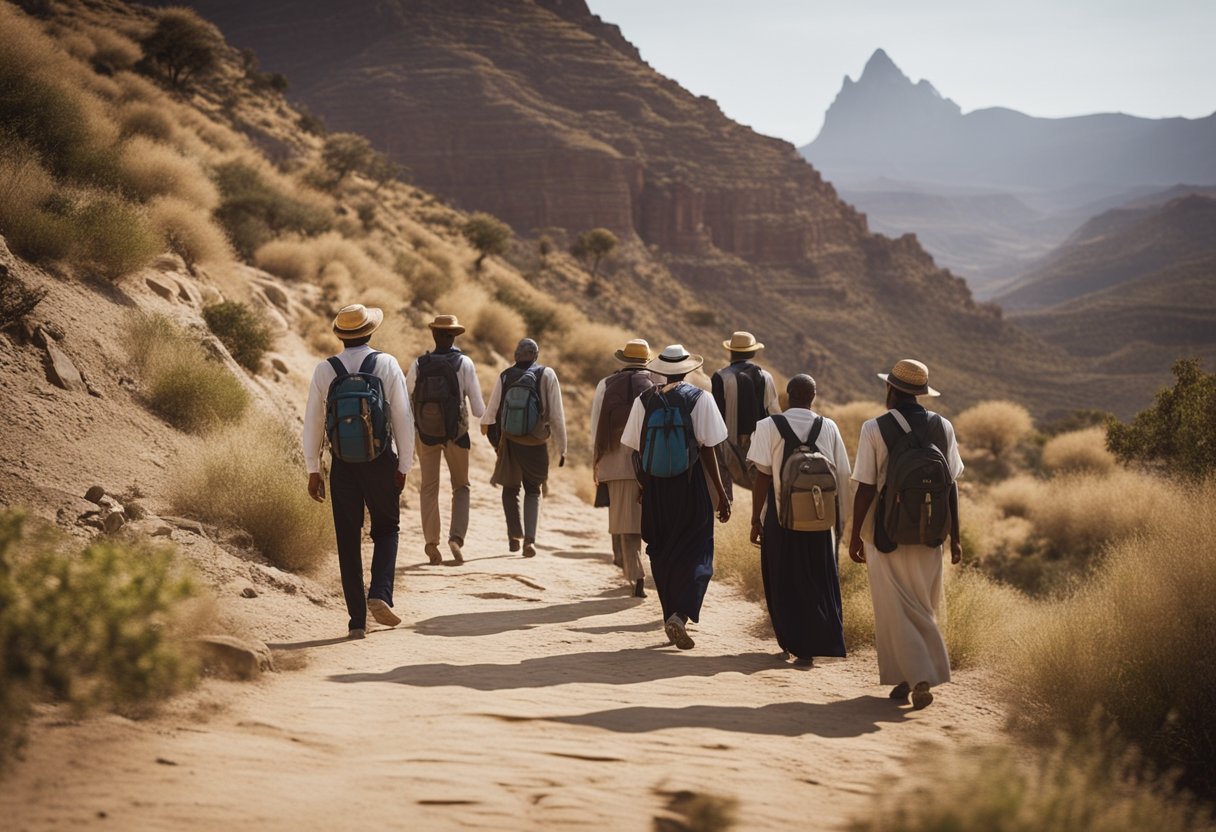
In our reflections on these revered pilgrimages, we recognise a shared quest for deeper insight and spiritual enrichment—a journey transcending geography. The pilgrimage, in its various forms from Mecca to Santiago de Compostela, offers profound opportunities for personal growth and knowledge.
These spiritual odysseys equip us with fresh perspectives on life and the world around us. As we traverse through sacred spaces, we engage in dialogue with history and the essence of our faiths. The paths we tread are imbued with stories of countless seekers before us, and with each step, we weave our narrative into this enduring tapestry.
It is not merely the destination that holds significance but the introspection and transformation encountered along the way. Reflection is a cornerstone in the pilgrim’s experience—where quiet contemplation yields self-discovery and a deepened sense of community with fellow travellers.
Let our recounting of these pilgrimages remind us that such journeys are as variable as the individuals undertaking them. They mirror the diversity of spiritual expression and the universality of our search for meaning.
We depart from these journeys enriched, bringing home not just memories but a rekindled spirit that continues to resonate long after the physical sojourn ends. Our collective narrative is one of continued learning, reverence for the paths we walk, and the wisdom gathered from the roads that stretch both behind and before us.
FAQs
In this section, we answer some of the most commonly asked queries about pilgrimages worldwide, from the challenges you might face on the Camino de Santiago to the deep-seated traditions underlying the most well-known spiritual quests.
What comprises the spiritual journey on the Camino de Santiago?
The spiritual journey on the Camino de Santiago involves a collection of ancient pilgrim routes that converge at the apostle Saint James the Great shrine in the cathedral of Santiago de Compostela in Spain. Pilgrims often reflect and discover as they walk these paths, ranging from hundreds to thousands of kilometres.
Which pilgrimage is considered the most renowned globally?
The Hajj, the pilgrimage to Mecca, is the most renowned globally, attracting millions of Muslims worldwide. As one of the Five Pillars of Islam, it is a religious duty that Muslims are expected to carry out at least once in their lifetimes if they are physically and financially able to do so.
What are common spiritual exercises undertaken during pilgrimages?
Common spiritual exercises during pilgrimages include prayer, meditation, attending religious services, fasting, and reading scripture. Pilgrims also often engage in contemplative walking and reciting mantras or chants as a spiritual practice.
What variety of pilgrimages have been historically observed?
Historically observed pilgrimages include journeys to Mount Kailash in Tibet, the Ganges River in India, the Christian routes to Jerusalem, Islamic routes to Mecca, and Buddhist paths across Asia. These pilgrimages represent diverse cultures and religions, each with its significance and traditions.
How does the experience of a pilgrimage differ from a typical holiday?
A pilgrimage differs from a typical holiday’s emphasis on spiritual growth, self-reflection, and religious devotion. It’s a journey with a sacred purpose, often involving sacrifice and hardship, in contrast to holidays mostly focused on relaxation and leisure.
What significance do sacred sites hold in various religious traditions?
Sacred sites hold profound significance in various religious traditions as places where the divine has manifested in the mortal world. Whether it’s the Western Wall in Jerusalem for Jews or the Bodhi Tree in Bodh Gaya for Buddhists, these sites are revered for their spiritual, historical, and cultural importance.






